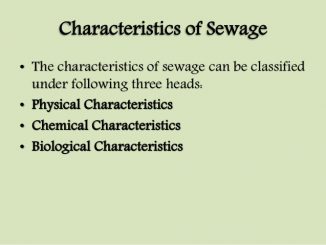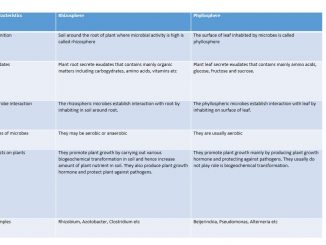
Bacteriological water analysis
Method of water sample examination Microbiological or bacteriological analysis of water is performed in 2 steps: Step I: Water sample collection: Collection of water sample […]

Method of water sample examination Microbiological or bacteriological analysis of water is performed in 2 steps: Step I: Water sample collection: Collection of water sample […]

Characteristics of sewage I. Physical characteristics of sewage: 1. Temperature: Temperature of sewage depends upon season. However temperature is slightly higher than that of ground […]

Cellulose decomposition: Cellulose is relatively resistant polysaccharide, found in cell wall of plant cell. Cellulose is a linear polymer of β-D-glucose in which glucose units […]

Difference between Rhizosphere and Phyllosphere Characteristics Rhizosphere Phyllosphere Definition Soil around the root of plant where microbial activity is high is called rhizosphere The surface […]

Microbiology of Rhizosphere: The soil surrounding the plant root where root exudate migrate and microbiological activity is exceptionally high is called rhizosphere. The surface of […]

Phyllosphere: The surface of leaf is called phylloplane and the zone on leaf inhibited by microorganisms is called phyllosphere. The plant leaves are exposed to […]

Leishmania donovani Leishmania donovani causes visceral leishmaniasis. The disease is also known as Dum-Dum fever, Asian fever, Assam fever or infantile splenomegaly in various parts […]

Taenia solium; Pork tape wormK Taenia solium commonly known as the pork tapeworm or the armed tapeworm. It is a flat-ribbon like tape worms that […]

Onchocerca volvulus Onchocerca volvulus derived its name from two Greek word, onkos-hook, cercos-tail, hence meaning ‘hooked tailed’. It is a nematode that causes onchocerciasis or […]

Strongyloides stercoralis Strongyloides stercoralis is commonly known as dwarf threadworm. It was identified by Baray in 1876. It is the smallest nematode known to cause […]
Copyright © 2024 | WordPress Theme by MH Themes